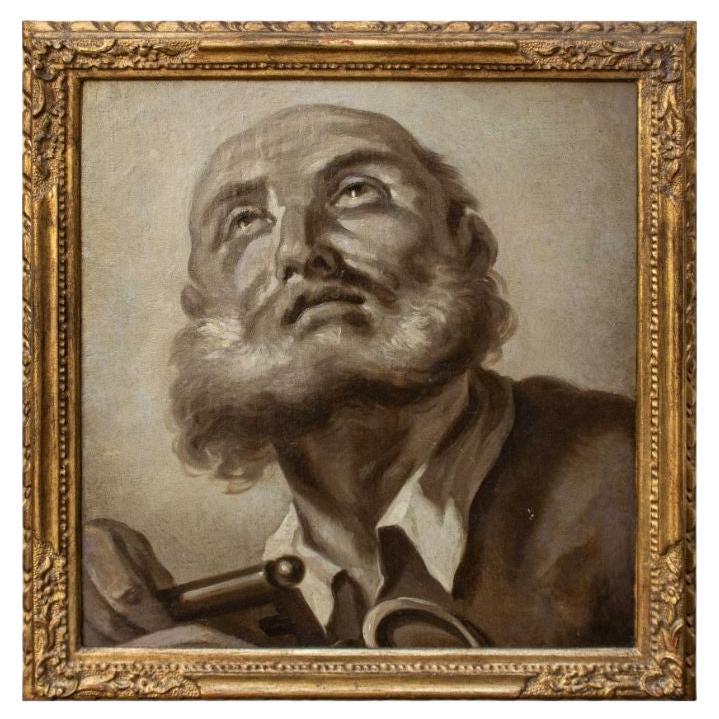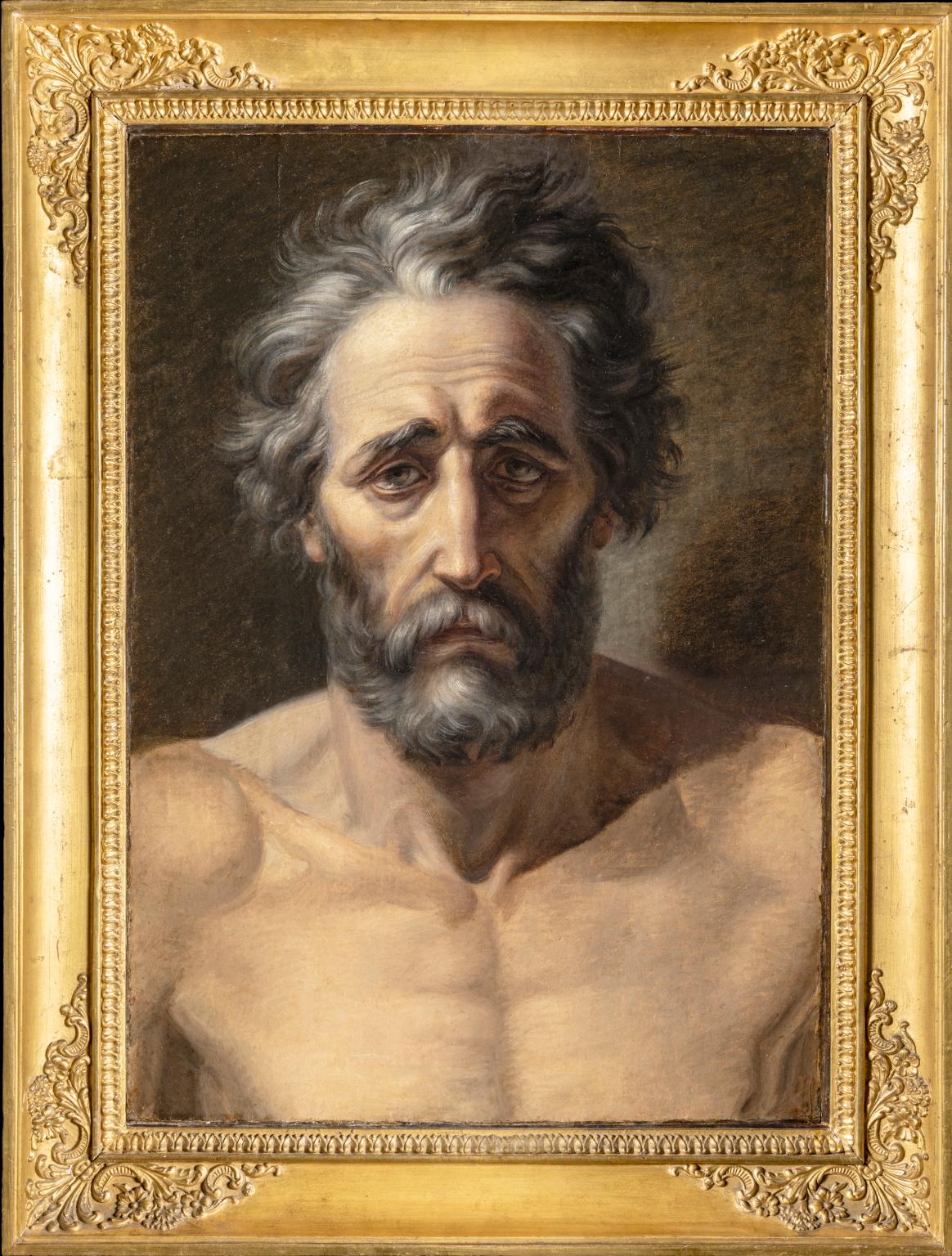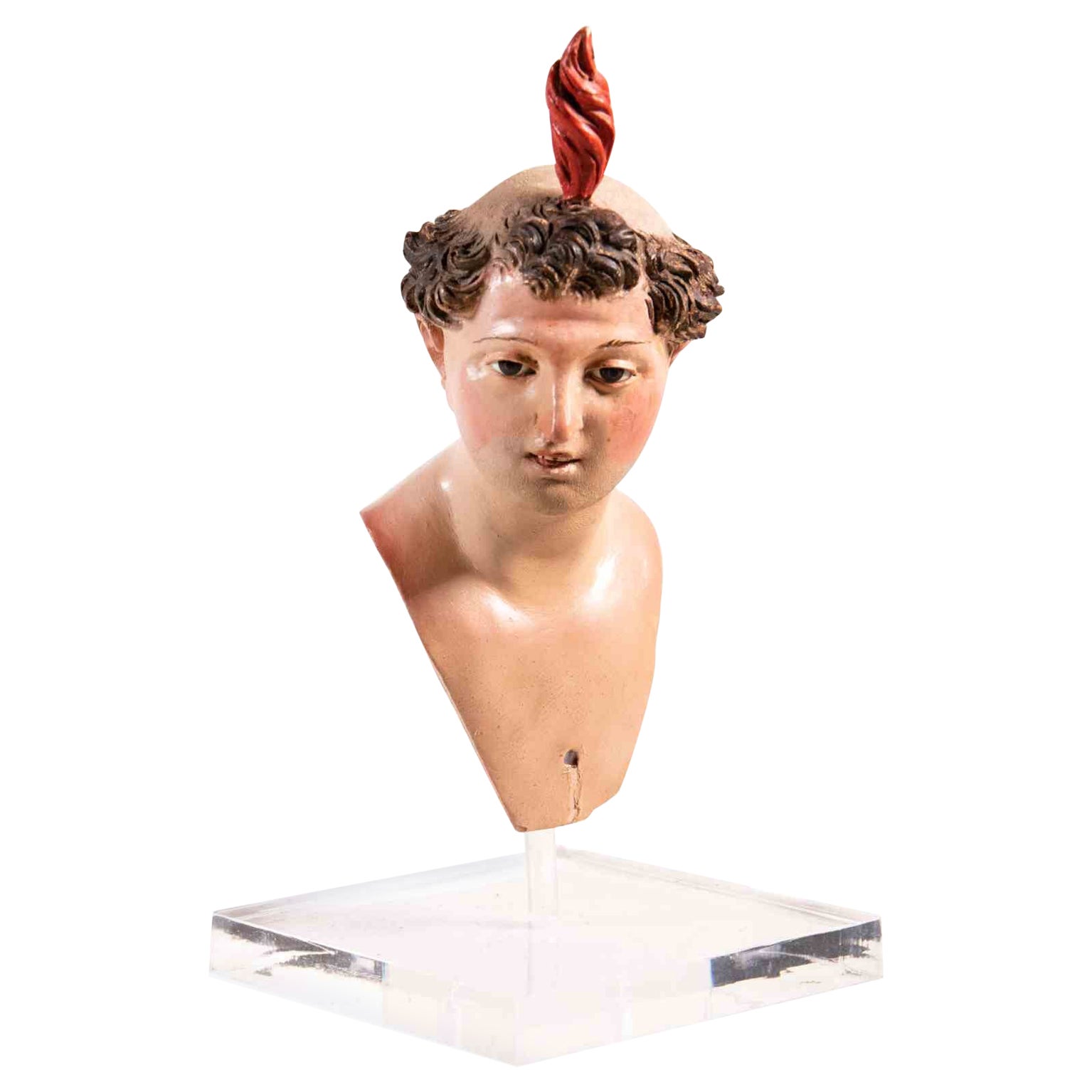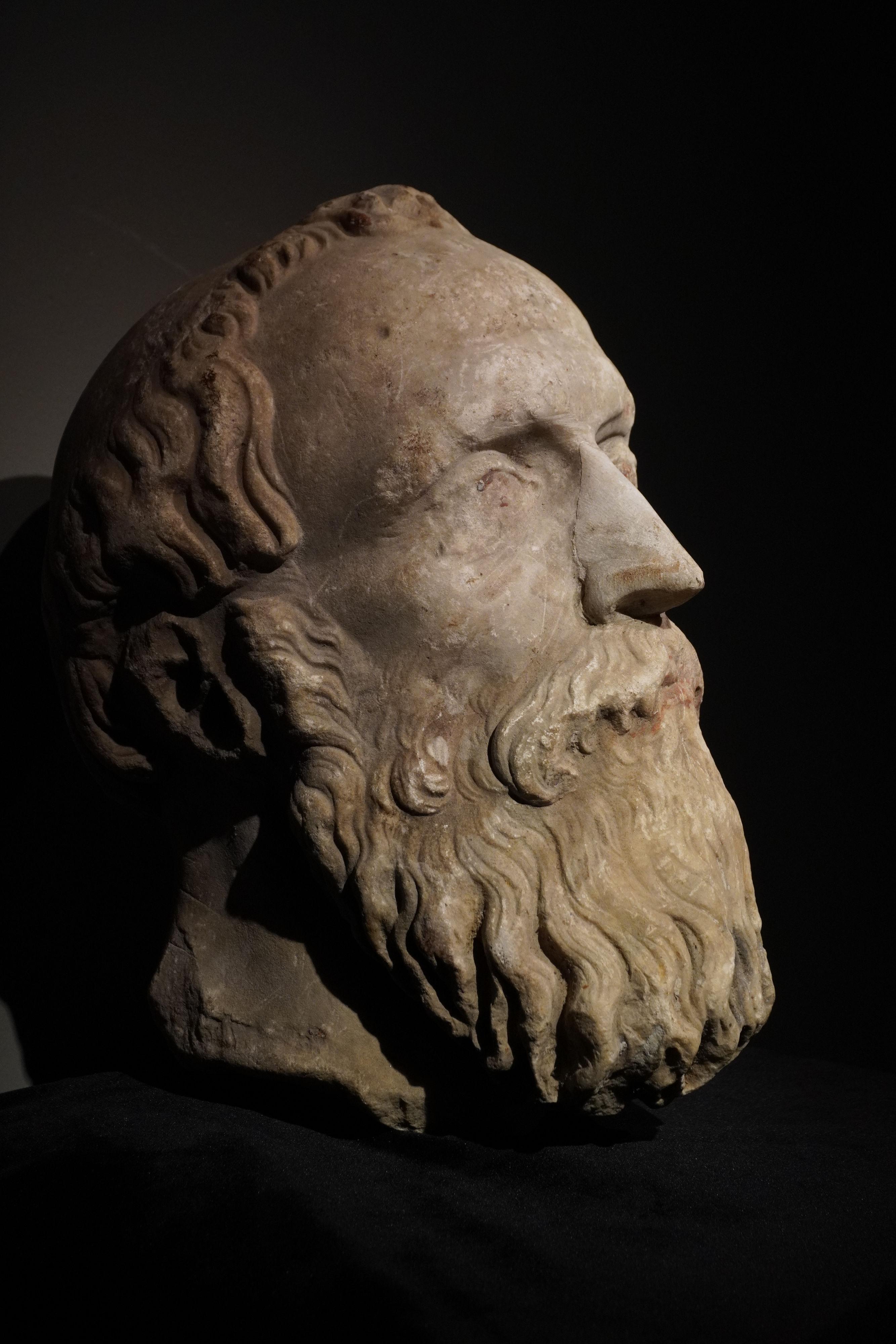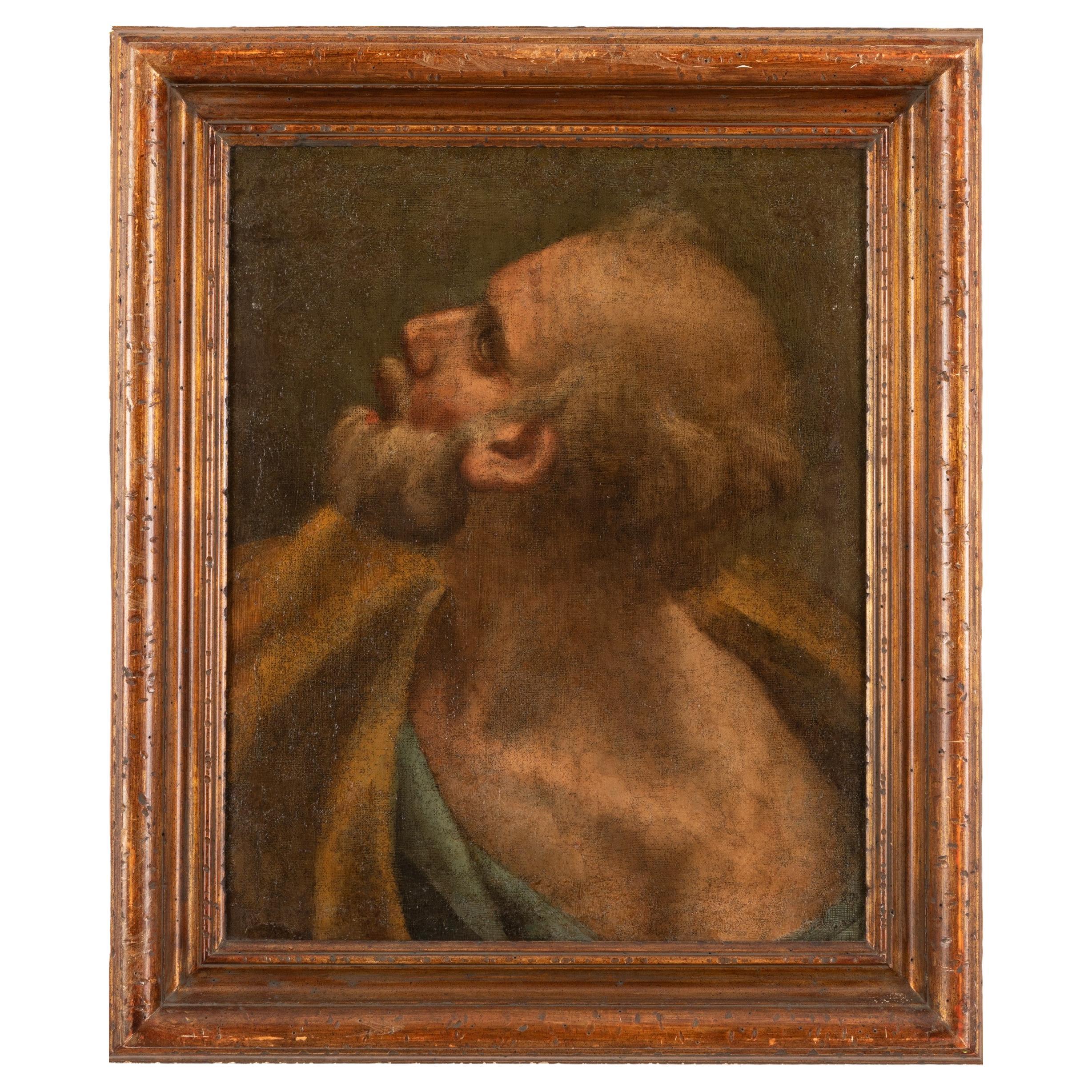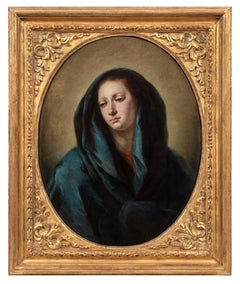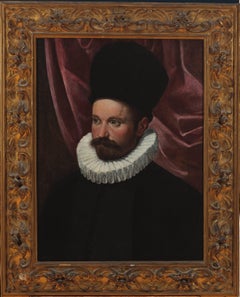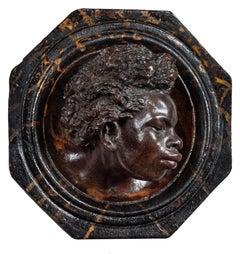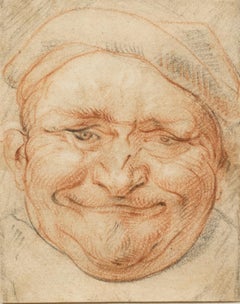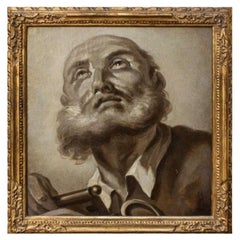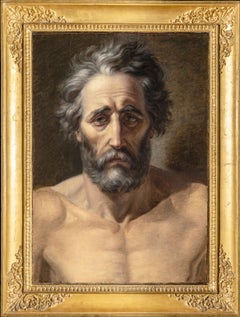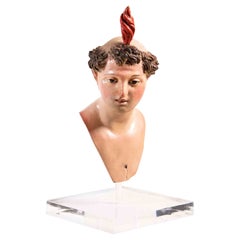Items Similar to Head of a Classical Poet (Socrates?)
Want more images or videos?
Request additional images or videos from the seller
1 of 5
Pier Francesco MolaHead of a Classical Poet (Socrates?)
$45,000
£33,391.75
€38,896.81
CA$62,640.33
A$69,755.65
CHF 36,303.96
MX$860,078.79
NOK 462,358.73
SEK 434,572.39
DKK 290,218.45
Shipping
Retrieving quote...The 1stDibs Promise:
Authenticity Guarantee,
Money-Back Guarantee,
24-Hour Cancellation
About the Item
Provenance:
Possibly Antonio Amici Moretti, Rome, 1690
Roy Clyde Gardner, Union, Mississippi, 1970s until 2004; by whom given to:
Mississippi Band of Choctaw Indians, 2004-2010
Literature:
Francesco Petrucci, Pier Francesco Mola (1612-1666): Materia e colore nella pittura del ‘600, Rome, 2012, p. 390, cat. no. B118.
Although born in Ticino, in a town now part of Switzerland, Pier Francesco Mola was definitively a Roman artist, his family having moved to Rome in 1616 when his father was appointed architect to the Camera Apostolica, the papal treasury. Other than two extended trips outside the city, one a two-year stay in Bologna where he worked with Francesco Albani, Mola remained in Rome for his entire life.
Mola’s oeuvre ranges from ambitious religious compositions to evocative landscapes, often with diminutive figures providing only a suggestion of subject matter. Among his most attractive and memorable paintings, however, are half-length and bust-format depictions of ancient literary figures. These vary in identity but have in common the depiction of an elderly bearded figure, often in contemplative or ecstatic attitude, his head crowned with laurel. These figures are characterized by a vigorously executed, richly nuanced physiognomy. Some with vacant eyes and a stringed instrument are traditionally called Homer (Rome, National Gallery; Dresden Gemäldegalerie, Moscow, Pushkin Museum; Ariccia, Palazzo Chigi); others Virgil (Milan, Koelliker Collection), Archimedes (Dresden), or Euclid (Private Collection). Many have only generic titles, such as an “Old Man,” a “Mathematician,” “Astronomer,” “Poet,” or a “Philosopher.”
The subject of the present work has traditionally been considered Socrates, a figure that Mola treated in his multi-figure composition of Socrates Instructing the Young on Self-Knowledge (Lugano, Museo Civico), but there is little internal evidence in the present painting to confirm that. Francesco Petrucci has suggested that the he may be Homer, although the fixed eyes of the subject would be unusual in the depiction of the blind writer. In any case he is very much an ancient literary type, and certainly a Mola type—that of the wise, authoritative, somewhat romantic poet. Mola’s brilliant handling of the paint can be seen in both the bold delineation of features, such as the ear, and the fine elaboration of details, as in the beard. Petrucci believes that the scale of the head suggests that this work may have been conceived as preliminary for a larger composition rather than being an independent study.
The attribution of the present work to Pier Francesco Mola was confirmed on firsthand inspection by Dr. Erich Schleier (in July 2011) and by Dr. Francesco Petrucci (in February 2012), who considers the painting a late work dating from the 1660s.
- Creator:Pier Francesco Mola (1612-1666, Italian)
- Dimensions:Height: 19.5 in (49.53 cm)Width: 14.375 in (36.52 cm)
- Medium:
- Movement & Style:
- Period:
- Condition:
- Gallery Location:New York, NY
- Reference Number:1stDibs: G12061210240
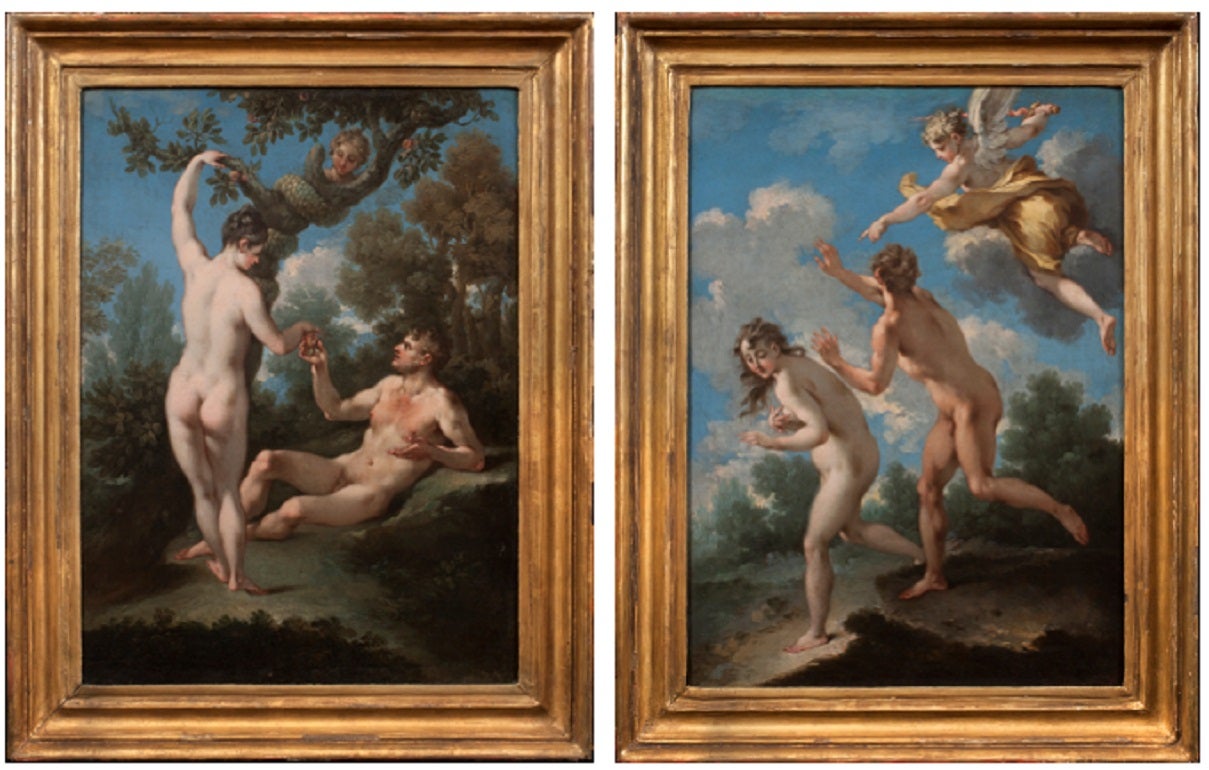
About the Seller
5.0
Recognized Seller
These prestigious sellers are industry leaders and represent the highest echelon for item quality and design.
Established in 1997
1stDibs seller since 2012
21 sales on 1stDibs
Typical response time: 12 hours
- ShippingRetrieving quote...Shipping from: New York, NY
- Return Policy
Authenticity Guarantee
In the unlikely event there’s an issue with an item’s authenticity, contact us within 1 year for a full refund. DetailsMoney-Back Guarantee
If your item is not as described, is damaged in transit, or does not arrive, contact us within 7 days for a full refund. Details24-Hour Cancellation
You have a 24-hour grace period in which to reconsider your purchase, with no questions asked.Vetted Professional Sellers
Our world-class sellers must adhere to strict standards for service and quality, maintaining the integrity of our listings.Price-Match Guarantee
If you find that a seller listed the same item for a lower price elsewhere, we’ll match it.Trusted Global Delivery
Our best-in-class carrier network provides specialized shipping options worldwide, including custom delivery.More From This Seller
View AllHead of the Virgin
Located in New York, NY
Provenance: Private Collection, Paraguay.
This unpublished Head of the Virgin is a new addition to the rich corpus of paintings by Giovanni Battista Tiepolo. While the artist freque...
Category
18th Century Old Masters Figurative Paintings
Materials
Oil, Canvas
Portrait of a Gentleman
By Ippolito Scarsella (Scarsellino)
Located in New York, NY
Provenance: Suida-Manning Collection, New York
Private Collection
Exhibited: Venetian Paintings of the Sixteenth Century, Finch College Museum of Art, New York, October 30-December 15, 1963, no. 31.
Veronese & His Studio in North American Collections, Birmingham Museum of Art, Oct. 1-Nov. 15, 1972, and Montgomery Museum of Fine Arts, Dec. 5-Dec. 31, 1972
Literature: Robert L. Manning, A Loan Exhibition of Venetian Paintings of the Sixteenth Century, exh. cat. New York 1963, cat. no. 31ill., as by Veronese
Stephen Clayton and Edward Weeks, eds., introduction by David Rosand, Veronese & His Studio in North American Collections, Birmingham 1972, as by Veronese, p. 38 ill.
Terisio Pignatti, Veronese, Venice 1976, I, p. 199, cat. no. A225, II, fig. 908, as attributed to Veronese
Terisio Pignatti and Filippo Pedrocco, Veronese; catalogo completo dei dipinti, Florence 1991, no. 54°, as attributed to Veronese.
Terisio Pignatti and Filippo Pedrocco, Veronese, Milan 1995, II, pp. 517-518ill., cat. no. A 56, under attributed paintings, by Veronese and workshop)
John Garton, Grace and Grandeur; The Portraiture of Paolo Veronese, London-Turnhout 2008, p. 237, fig. 77, cat. no. R16, as workshop of Veronese.
Scarsellino’s art is widely regarded as critical link between the Renaissance and the Baroque styles in Emilian painting; not only was he an important transmitter of the heritage of the Renaissance, but he was also open to innovative ideas, and was one of the earliest to experiment with the trend to naturalism that would become fundamental to art of the new century. Born around 1550, he received his earliest training from his father Sigismondo, an architect and painter; it was probably while working at his father’s side as a youth that he acquired the nickname Scarsellino, or “little Scarsella”. After absorbing the principles of his art in Ferrara and Parma, he went to Venice in 1570, staying for four years and working in the shop of Veronese. In the following decade, his art —especially in terms of its piety and its development of landscape— demonstrates a strong sympathy with that of the Carracci, with whom he worked in 1592-1593 at the Palazzo dei Diamanti in Ferrara. Maria Angela Novelli and later Alessandra Frabetti both propose that Scarsellino traveled to Rome, although such a trip has not been documented; if he did travel to Rome, it probably would have occurred during the years that Scarsellino’s colleagues Agostino and Annibale Carracci were there, that is, beginning in 1595 and until 1609. The last decades of Scarsellino’s career again involve stylistic experimentation, this time in a manner that would bring his work very close to the progressive figurative naturalism of Carlo Bononi and prepare the way for Guercino.
The present portrait of a distinguished gentleman had been long thought to be by Paolo Veronese and was in fact attributed to him by such distinguished connoisseurs as Adolfo Venturi and Wilhelm Suida. The portrait’s style is, however, distinct from Veronese’s, although clearly indebted to it, and the attribution to the young Scarsellino is wholly convincing. The painting would then date from the 1570s – a date confirmed by the costume the subject wears. The puffed hat that appears in the painting had a rather short-lived vogue in the early 1570s. One sees it in Giambattista Moroni’s Portrait of Count...
Category
18th Century and Earlier Baroque Portrait Paintings
Materials
Canvas, Oil
Head of a Young African Man
Located in New York, NY
Provenance: Private Collection, Spain.
This intriguing and enigmatic sculpture depicts the head of a young African man emerging from a circular opening ...
Category
Early 1800s Figurative Sculptures
Materials
Terracotta
Head of a Cheerful Man Wearing a Cap
Located in New York, NY
Watermark: the arms of Amsterdam
Provenance:
Christie’s, Amsterdam, 1 December 1986, lot 46; where acquired by:
Private Collection, New York
Literature:
Roger Adolf d’Hulst, “Jordaens Drawings: Supplement II,” Master Drawings, vol. 28, no. 2 (1990), pp. 153-156, no. A237a, fig. 17.
Matías Díaz Padrón, Jacob Jordaens...
Category
17th Century Baroque Portrait Drawings and Watercolors
Materials
Paper, Chalk
Portrait of a Bewigged Gentleman
By Vittore Ghislandi
Located in New York, NY
Vittore Ghislandi, called Fra Galgario
Provenance:
Robert L. and Bertina Suida Manning, New York, ca. 1966-1996
Private Collection, USA
Exhibited:
“Eighteenth Century European Pai...
Category
18th Century Baroque Paintings
Materials
Copper
Joseph Holding the Christ Child
By Pietro Bardellino
Located in New York, NY
Provenance: Private Collection, Argentina.
A work of great delicacy and intimacy, this small painting on copper by Pietro Bardellino treats a subject which grew in popularity during the Baroque period: Saint Joseph and the Christ child...
Category
18th Century Baroque Paintings
Materials
Copper
You May Also Like
19th Century Head of St. Peter Painting Oil on Canvas by Follower of Piazzetta
By Giovanni Battista Piazzetta
Located in Milan, IT
Follower of Giambattista Valentino Piazzetta (Venice, 1682 - there, 1754)
Head of St. Peter
Oil on canvas applied on cardboard, 36.5 x 34.5 cm
With frame 42.5 x 41 cm
The claves Regni Coelorum, an essential Petrine attribute, shyly peek out in this painting, with the sole purpose of allowing the character to be recognized. The wholeness of attention is indeed conveyed to the Saint, from aching humanity and divine inspiration. Pietro is rendered with a liquid epidermis, illuminated by a pearly light that slips and drips to define the overbearing nose, cheekbones and browbone; while the vitreous humor of the eye turns bright to the sky, to investigate the highest wills of the divine mystery.
The portrait, rendered here in intense monochrome, denounces the direct dependence of the present artist on the suggestions of Giambattista (Valentino) Piazzetta, one of the greatest among the eighteenth-century Venetian masters. Following an immature apprenticeship in the field of wood carving with his father Jacopo, a sculptor from Pederobba, in the Treviso area, Piazzetta retired to the workshop of Antonio Molinari...
Category
Antique 19th Century Italian Paintings
Materials
Canvas, Paper
Ritratto figurativo storico neoclassico fiorentino del XIX secolo con cornice
Located in Florence, IT
Non si tratta di uno studio preliminare al dipinto ma di una ulteriore messa a fuoco della fisionomia stravolta del protagonista, un ‘primo piano’ che ben corrisponde a quanto annota...
Category
1830s Other Art Style Portrait Paintings
Materials
Oil, Board
PHILOSOPHER - Neapolitan School - Italian- Figurative Oil on canvas painting
By Ciro De Rosa
Located in Napoli, IT
Philosopher - Ciro De Rosa Italia 2008 - Oil on canvas cm. 60x50
Gold leaf gilded wooden frame available on request
The painting by the painter Ciro De Rosa portrays an old and wise ...
Category
Early 2000s Baroque Portrait Paintings
Materials
Canvas, Oil
Head of Man, Italy, 18th Century
Located in Roma, IT
Head of man is a sculpture realized in polychrome ceramic with glass eyes.
Neaples, 18th Century.
Category
Antique 18th Century Italian Figurative Sculptures
Materials
Ceramic
$1,083 Sale Price
25% Off
ITALIAN RENAISSANCE PORTRAIT HEAD OF BEARDED MAN
Located in Milan, IT
PORTRAIT HEAD OF BEARDED MAN
Central Italy, 16th/17th Century
marble with traces of polychromy
height 39 cm
height 15 1/4 in
Category
16th Century Figurative Sculptures
Materials
Marble
18th Century Roman Old Master Portrait Oil Painting
Located in Nottingham, GB
18th century Roman painter, old master portrait of an old man on canvas.
Provenance: an important private collection
Good condition overall, ready to hang
Free international shipping.
Category
Antique 18th Century Paintings
Materials
Canvas, Paint
More Ways To Browse
Antique Union Cases
Antique String Instrument
Busts Of Philosophers
Bearded Man Bust
Francesco Albani
Socrates Bust
The Physiognomy Ear
Durand Paris
Margaret Brown
Riviera Paintings France
Southwest Original Art Landscapes
Sunset Horizon Painting
Affordable Impressionist Art
Art From Rio De Janeiro
Lawyer Painting
Oil Paintings Of Jerusalem
Patron Saint
California Impressionist Seascape Paintings
